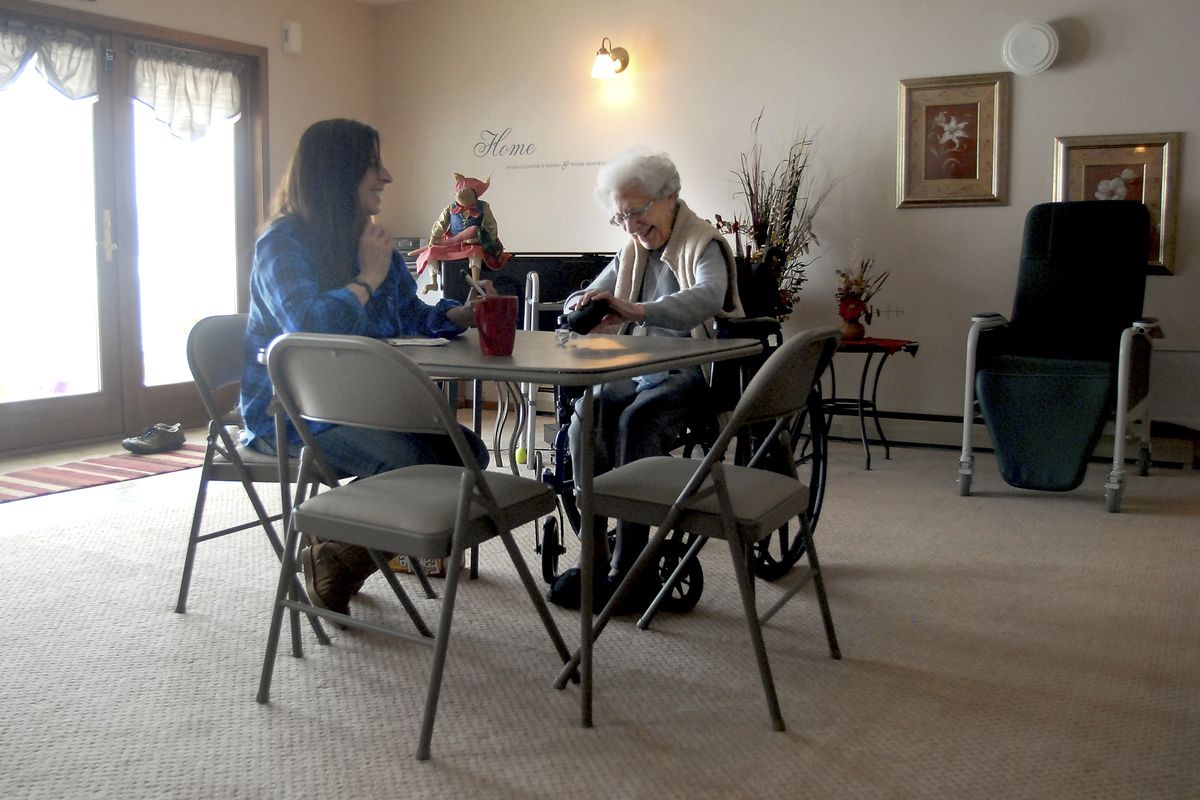Former monastery offers haven
Home provides dementia care

COLUMBIA FALLS, Mont. – In the late 1980s, three Benedictine sisters lived in a small farmhouse outside of Columbia Falls, waiting for the right opportunity to build Montana’s first Catholic monastery.
That opportunity came when they found 12 acres of pretty, wooded land available between Columbia Falls and Whitefish off Montana Highway 40. The sisters enlisted the help of local workers and in 1990 began building their new home. The following January, they moved into Epiphany Monastery.
“The three of us were interested in bringing monastic life to Montana because there were no other monasteries in Montana at that time,” Sister Lorane Coffin, whose mother also lived at the monastery, said last week. “So we looked around for a place and that opened up.”
But in 2000, Coffin moved back to Rapid City, S.D., where she had lived before starting the Flathead monastery, to take a leadership position at St. Martin’s Monastery. The two remaining sisters, Gemma Schatz and Bernice Simon, stayed until Simon’s death in 2006.
After Schatz moved back to Rapid City, Coffin said, the monastery was sold to the Catholic diocese based in Helena and the land sat vacant for several years until Pat Zinke and Ed Blackwell purchased it. The couple turned the former monastery into a foster care facility for patients with Alzheimer’s disease and dementia.
Now Zinke and Blackwell are putting the finishing touches on a new 10,000-square-foot, 26-person assisted living home on the same piece of land, just across the parking lot. When it opens later this month, Expressions Specialized Memory Care Home will take the residents from the old facility along with new applicants who have Alzheimer’s and other forms of dementia.
“We told people we bought the old Catholic monastery in Columbia Falls, thinking they’d know what we were talking about,” Blackwell said. “No one knew what we were talking about.”
As monasteries tend to do, the Epiphany Monastery operated quietly and out of sight from the public eye. But those who visited, often as part of a retreat, discovered a place dedicated both to religious faith and human compassion. When not fulfilling the basic obligations of eating, sleeping and praying, the sisters gave their lives over entirely to caring for the terminally ill. Schatz and Simon were registered nurses.
“We took care of a number of terminally ill men and women who didn’t have anybody else to take care of them,” Coffin said.
Coffin, who has spoken with the new owners, is pleased to see the spirit of compassion alive again in her former home.
“Sister Gemma and I were really quite excited when we heard recently that the facility was going to be used for taking care of people who really need care and to be taken care of in a good, Christian way,” Coffin said.
Zinke, a registered nurse, has plans that are both ambitious and clear-eyed. Having worked as a memory care specialist during her 26 years in the health care field, Zinke believes many residences for Alzheimer’s and other dementia patients fail to provide a comforting atmosphere. Some are simply stark.
At the current home, a sign references both Zinke’s philosophy and the plight of memory care patients. It reads: “Home – where laughter is shared, where memories begin.”
“I’ve always felt that they should be cared for the same as other people,” Zinke said.
Zinke hopes to avoid anything resembling austere with her assisted living home. It is being specifically constructed and staffed with her vision in mind. And it doesn’t hurt that the land on which the home sits – an open meadow surrounded by conifers – is a veritable snapshot of solace.
“It’s such a beautiful setting,” Zinke said. “The sisters always felt that the Lord had blessed this land.”
When the weather warms, residents will have the opportunity to go outside for supervised gardening.
Every feature of the facility has been designed to accommodate the specific needs of memory care occupants. The building has wide hallways with railings so residents can stroll in a safe and enclosed environment. In addition to a large dining area, there is a pickup window attached to the kitchen for those who prefer to grab their food on the run.
“Nothing matters if people don’t feel cared for and loved,” Zinke said. “That’s the biggest thing: They have to be loved.”